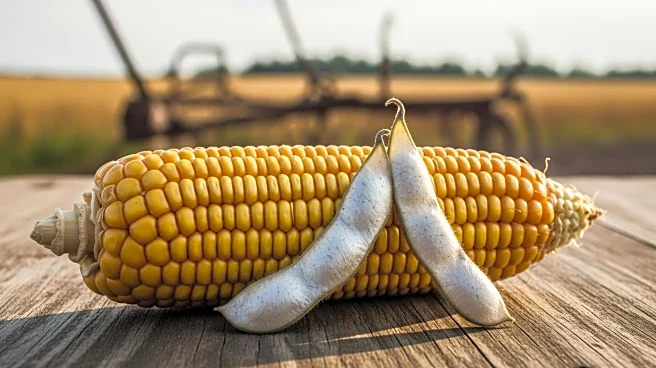What's Happening?
Farmers are being advised to adopt strategic marketing practices in response to volatile grain prices observed over the past two years. At the Commodity Classic conference in Denver, experts highlighted the importance of early seasonal selling dates for corn, soybeans, and wheat, recommending protection through hedges, forward contracts, and puts. Historical price patterns for corn and soybeans in 2025 mirrored those of 2024, with peaks in early months followed by declines into August. Farmers were encouraged to make cash sales and establish new-crop hedges between April and June to mitigate risks associated with market fluctuations.
Why It's Important?
The advice provided to farmers is crucial for navigating the complexities of grain markets, which have shown significant volatility. By adopting strategic marketing practices, farmers can better manage risks and potentially secure more favorable prices for their crops. This approach is particularly important given the unpredictable nature of agricultural markets, influenced by factors such as weather conditions and global demand. Effective marketing strategies can help farmers maintain profitability and sustainability in their operations.
What's Next?
Looking ahead to 2026, experts anticipate potential changes in market patterns, suggesting that farmers may need to adjust their strategies accordingly. The focus will likely shift to weather and planting conditions in South America, which could impact global grain prices. Farmers are advised to remain vigilant and adapt their marketing plans to capitalize on any emerging opportunities. Additionally, the use of options and hedges may become more prevalent as farmers seek to establish price floors and protect against downside risks.
Beyond the Headlines
The emphasis on strategic marketing highlights the broader challenges faced by the agricultural sector, including market volatility and the need for risk management. As farmers increasingly rely on financial instruments to stabilize their income, there may be implications for agricultural finance and insurance industries. This trend underscores the importance of financial literacy and access to market information for farmers, enabling them to make informed decisions in a rapidly changing environment.










